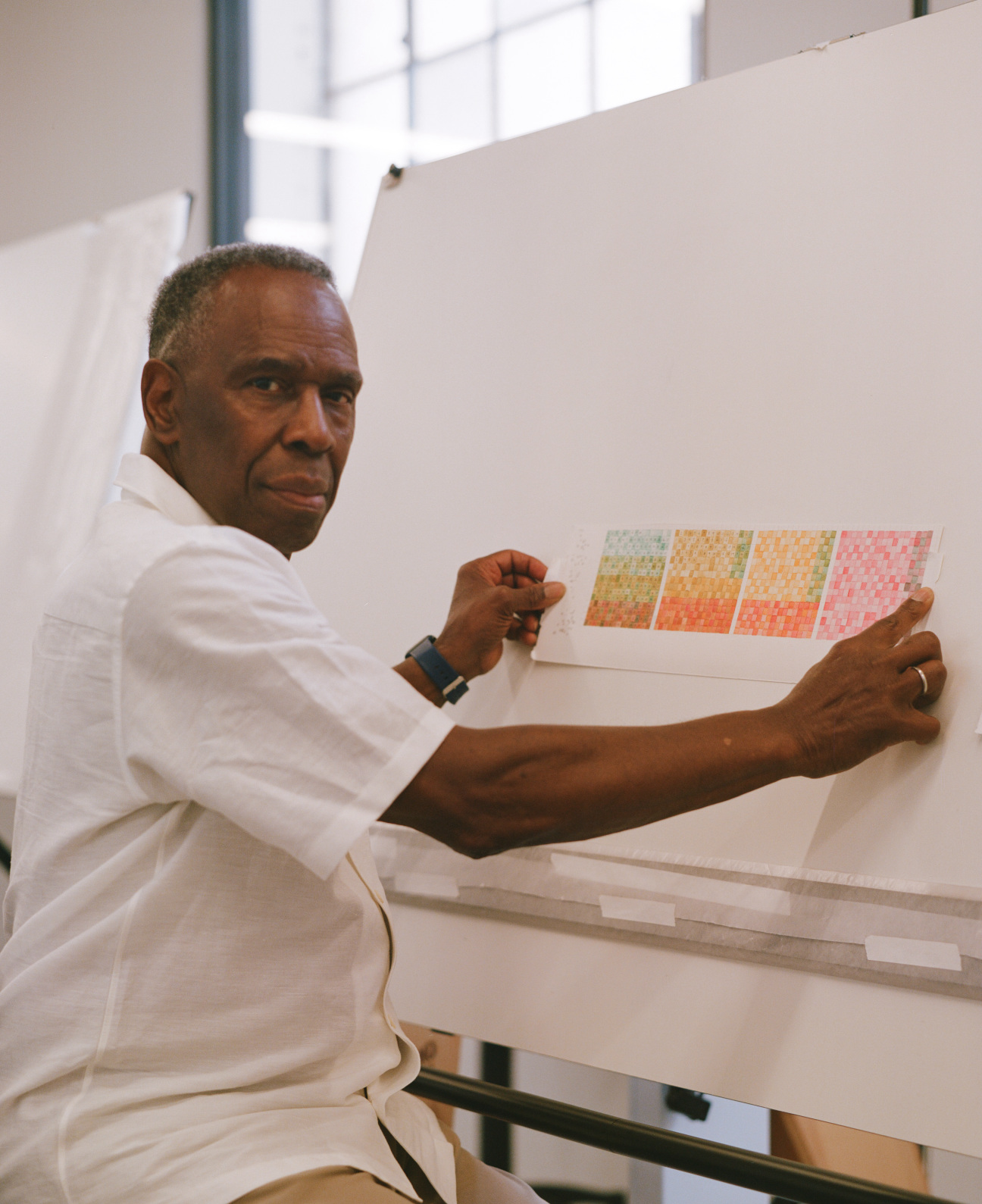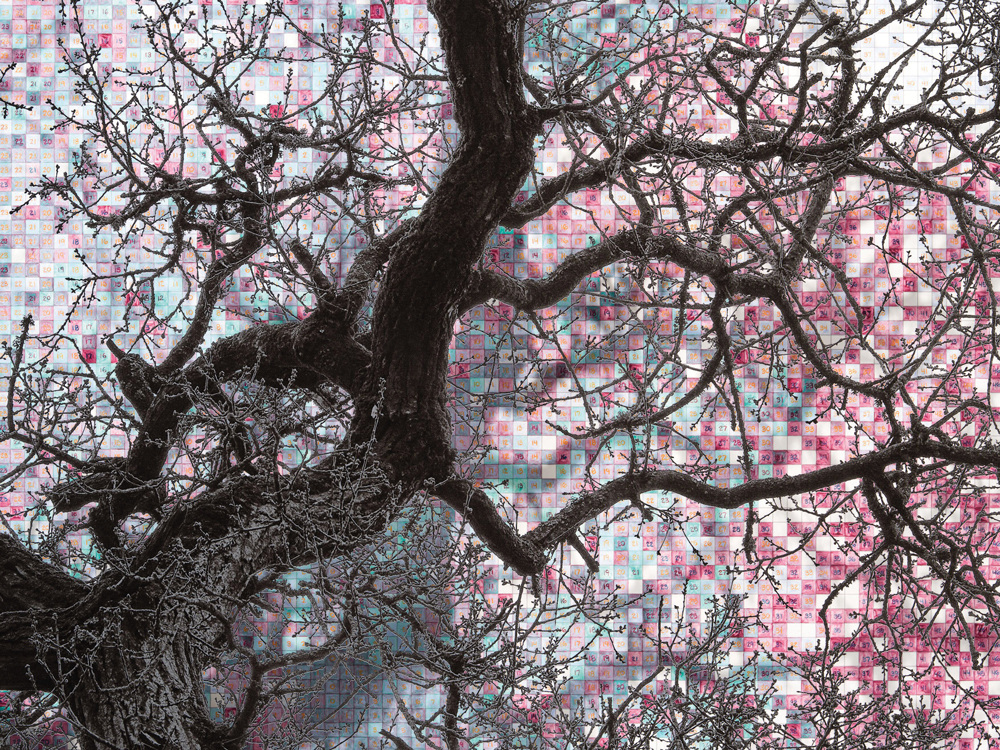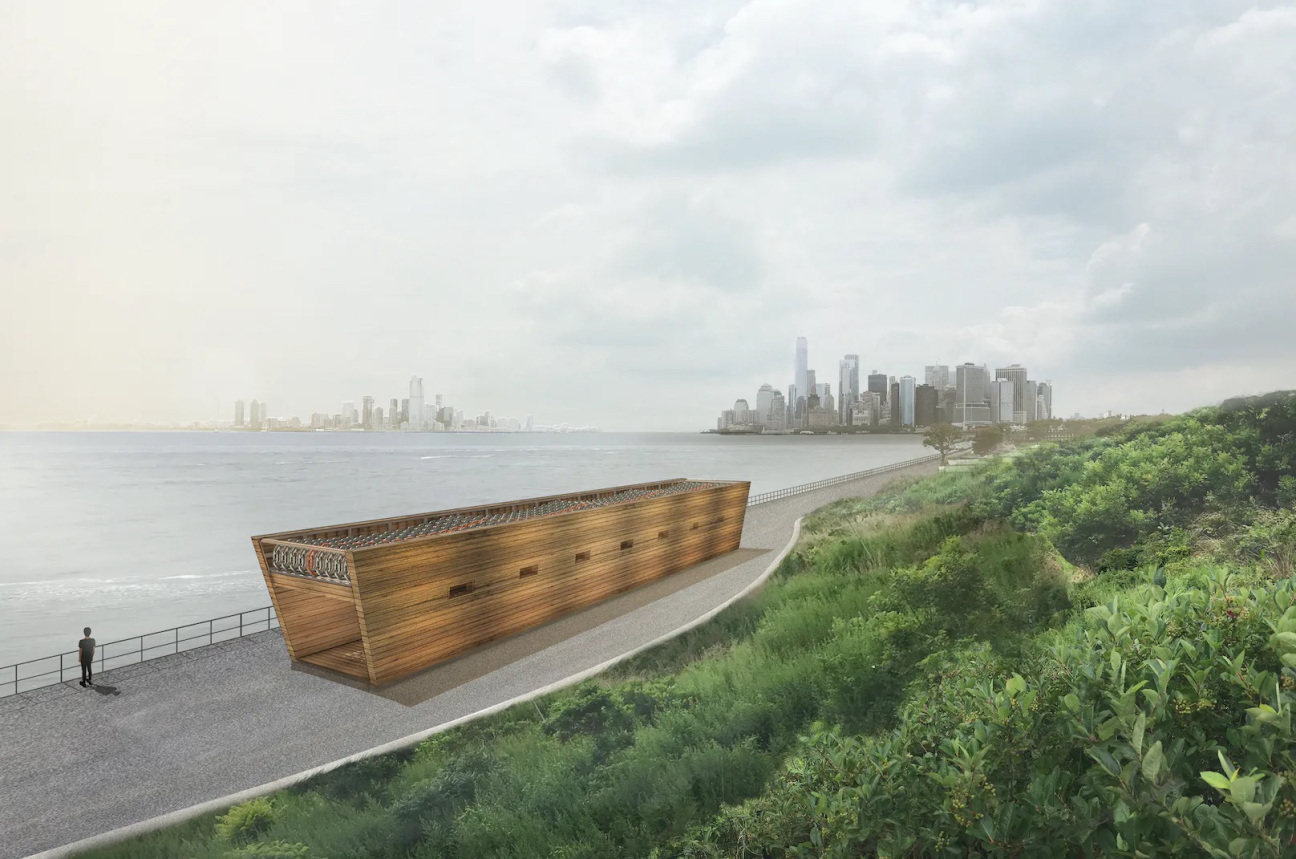Charles Gaines’s work aims to stretch, palpate, disintegrate, and—in all other ways—put pressure on the concept of meaning until it gives up the secret of its arbitrariness. Over the course of his nearly 60-year career, he has explored this concern with the arbitrariness of meaning through often-beautiful artworks, though he treats beauty as incidental. Gaines has absorbed the big lesson of the conceptualist movement of the 1960s and early '70s: the aesthetic dimension of art can’t be abolished—even a ready made or deconstructed object still has an appreciable form—but aesthetics is not the content of art, it’s just a necessary condition. Thus his work deconstructs the legibility of images without itself ever becoming illegible. Some of the artist’s early work, such as his famous “Numbers and Trees” series, made up of carefully hand-drawn and painted grids, even seem to anticipate the era of digital imaging. This is yet another example of the arbitrariness of meaning: Gaines is uninterested in the digital as such.

Photography by Clifford Prince King.
Gaines’s critical fidelity to the legacy of conceptualism can, however, make his work hard to read through contemporary political mores. For example, he wants to undermine the category of subjectivity, which he sees as falsely universalizing and insufficiently welcoming of legitimate criticism. “There’s a general problem with subjectivity,” he tells me, “because [the concept] of subjectivity [maintains] that certain ideas are not critique-able. If it can be established that something is transcendental determined or is a universality, there is no cultural or social critique that can attack it, undermine it, or even suggest that it’s wrong.” This seems to me to be quite different from our current predominant mode of critique, which involves reading antagonism between subjects back into apparently objective phenomena such as laws, algorithms, and labor. Though both modes of critique have the same aim—critiquing false universalities such as capitalism—many younger artists working today aim to use the existence of contesting subjectivities to undermine universality, whereas Gaines’s approach invests its hope in overcoming both subjectivity and universality.

Thinking about what artists today could learn from Gaines’s second-generation conceptualism, I remembered a 2017conversation I had with the artist and writer Manuel Arturo Abreu. I described a Scooby-Doo meme in which Shaggy removes the villain’s disguise (marked “objectivity”) to reveal their real face (marked “subjectivity.”) Pushing back on the graphic’s too-easy opposition between subject and object, Manuel said, “I don’t feel like objectivity is subjectivity. It could be inter-subjectivity. [Ludwig] Wittgenstein defines reality as something where there can be a shared agreement of what the terms of its discussion are. And we don’t have that because there are such profound disagreements even on the level of, should this person be alive or dead? So in a way, we live in a kind of fake news, non-real, virtual reality exactly because of anti-Blackness and misogyny…they somehow cut off the possibility of accessing the real.” I don’t know if Gaines would agree, though his recent body of work seems aimed at exactly this disjunction. A recent suite of public art works by Gaines titled “The American Manifest” reactivates the complex central questions of his work. Describing the Governors Island installation Moving Chains, Gaines tells me, “It’s just a structure with chains on top. The relationship that you draw from that is something that is already given to you from your cultural learning. The chains and the structure are two entirely separate, unrelated things. But we can bring them together using metaphor to create a political narrative about different subjects—the history of slavery is one, the history of commerce is another.” As I admit to him in our conversation via Zoom, I am confused by this: and a moving set of chains is technically arbitrary, what is arbitrary about the relationship between slavery and commerce? Their histories are so imbricated over the past few hundred years that they have been, at times, one and the same. And doesn’t the non-arbitrary nature of the relationship between slavery and commerce mean that Gaines’s choice to combine a barge and chains is just as conditioned by “cultural learning” as my response to the work? By what kind of Cartesian thought experiment could I arrive at a world in which an artwork made up of chains and a boat-like structure by the Ohio River is a random combination?

Courtesy of Creative Time.
But Gaines’s art seems to require a suspension of belief; the ordinary, everyday belief in the necessary or even historical connections between objects, ideas, and experiences. “Theseparateness of those two things remain,” says Gaines of the barge and chains. “They never become one thing. My task is to suggest where the link is forming. It’s not forming in the body of the [artwork] because what happens there is always the same.” The link forms in the world around the artwork and in the mind of the viewer. Over in Times Square, another Gaines work, Manifestos 4: The Dred and Harriet Scott Decision, more or less randomly sets the text of the 1857 Dred Scott decision to music. The work seems to both negate and affirm that there is a real history at play here, non-arbitrary if only in that it has already happened and can’t, therefore, be undone. Manifestos 4 was given additional, arbitrary resonance by the recent Supreme Court Dobbs v. Jackson Women’s Health Organization decision removing crucial legal protections around abortion access. Just as the Supreme Court of 1857 denied Black people’s citizenship and right to freedom, the Supreme Court of 2022 was empowered to deny individuals’ control over their reproduction, revealing that the bourgeois-individualist concept of property-in-the-person—that we own our bodies and decide what to do with them—is an ideology decided by custom, not a natural right Like how Gaines describes the chains and the boat-like structure of Moving Chains as two irreconcilably different objects that can only be brought together through a language-structure, as metaphor, the text of the law and the reality of the body are two entities with no given alliance. Does this produce the kind of politically galvanizing alienation effect imagined by the playwright Bertolt Brecht, or something more like the self-referential, hermetic investigations of an artist like Joseph Kosuth? The critique of meaning and subjectivity can sometimes lead artists to ignore the materiality of everyday life and politics. When Gaines criticized militant anti-gentrification organizers in his hometown of Los Angeles on the grounds that “gentrification is a complex sociological phenomenon that hardly anyone understands,” the organizers responded, “People whose rent increased 300 percent understand gentrification.”

In the 1970s, Gaines’s interest in structuralism set him apart from other Black artists, and even led some to deride his work as “too white.” Still, today, though he takes his institutional place among other previously under-recognized Black artists such as Faith Ringgold, his practice is at odds with a prevailing concern with identity and representation. This representative art is undergirded by a sense of both possibility and impossibility: Black art is finally carving out a secure space within the mainstream, even as threats to Black life outside the art institution mount. It is roughly analogous, in time and in content, to a political turn towards electoral representation among both right-wing and left-wing radicals. Politically aware young people who might, a generation or even a decade ago, have nurtured spaces and critiques that were oppositional to the state, are now eager to use the state to manage distribution and production to their own ends. Just as, within this transformation fueled by emergency and crisis, there should still be room to consider the limitations and impasses of official politics, there should be room in art to consider, as Gaines does, the fundamental questions of how culture produces meaning. Where representation is basically affirmative, positive, and recuperative, Gaines’s rejection of the very structure of representation—that an image can index something other than itself—creates a productive negativity that opens out new horizons beyond the search for recognition.
As his oeuvre suggests, the work of undoing is never done.










 in your life?
in your life?

